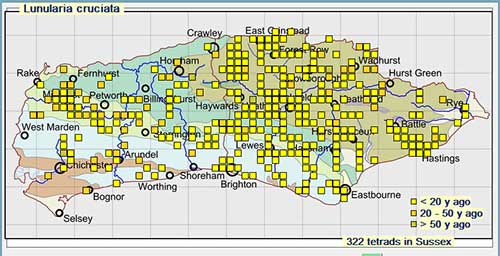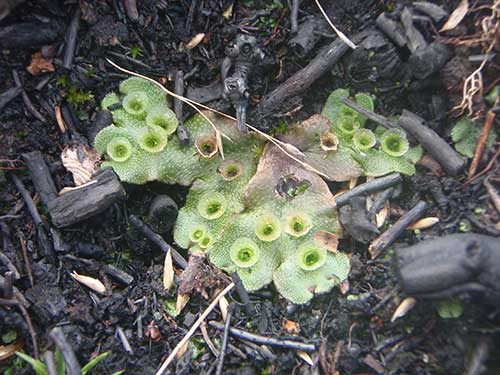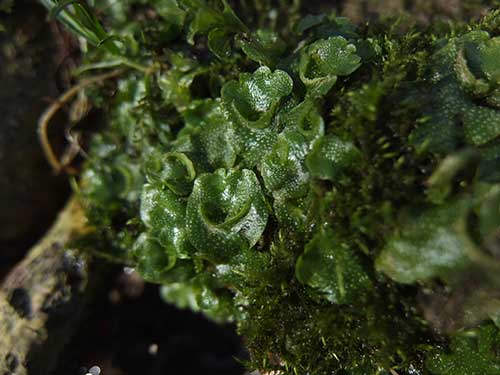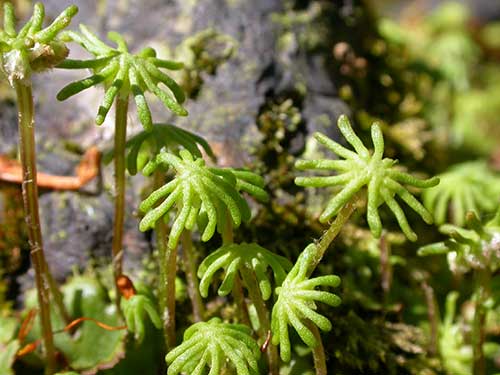


Map showing distribution of Marchantia polymorpha records in Sussex

Map showing distribution of Lunularia cruciata records in Sussex

Marchantia polymorpha
Photo: Brad Scott

Lunularia cruciata
Photo: Brad Scott

Marchantia polymorpha
Photo: Brad Scott
As the compass of our natural history worlds shrinks in the Covid universe, there is always the garden to explore, or even the pavements on the walk to the shops. In the shady damp corners and cracks you can often find two of our common thallose liverworts. And, as is always the case with bryophytes, they are remarkably under-recorded throughout the county, as can be seen from the distribution maps.
Often found as ‘weeds’ on soil in gardens and greenhouses (often in plant pots), these two plants look quite similar at first glance, but are in reality very easy to tell apart. They don’t need much soil, either, and can be found as pavement plants, in those small, damp and protected gaps between paving stones.
They are both made up of a tough-looking green thallus on the ground, rarely more than a centimetre across, though you can find large areas covered in them, carpetting the ground.
Lunularia cruciata has the English name Crescent-cup Liverwort, and that exactly captures what you need to look for; it has crescent-shaped cups on its surface containing gemmae, small balls of cells that can be dispersed, typically by the rain, and enable the plant to reproduce vegetatively.
Marchantia polymorpha (Common Liverwort) looks very similar, but its gemmae receptacles are fully cup-shaped and the thallus of the common subspecies (ruderalis) has an irregular thin black median line. They can frequently be found with mature reproductive structures, borne on little stalks sticking up from the surface of the plants; the males have flat-topped receptables with rounded lobes, and those of the females look like a miniature forest of palm trees.
We want to see how many records we can receive by the end of February, and especially how many new tetrad records there will be, so please have a look in your local area. Please submit any records with some photos to iRecord, or with location, grid reference and date to @Trichocolea on Twitter, or by email to sue@rubinstein.plus.com.
There are (normally) regular field meetings recording the mosses and liverworts of the area organised by the South-East Group of the British Bryological Society, to which all are welcome, and you are encouraged to sign up to our email list. You can also follow the bryophyte recording activity in the county on our blog: https://sussexbryophytes.wordpress.com/bbs-se-group/.
Brad Scott
Every month it is our aim to highlight a species that is “in-season” and, although not necessarily rare or difficult to identify, has been highlighted by our local recording groups as being somewhat under-recorded and for which new records would therefore be welcomed.
If you or your recording group are aware of species such as this then please contact Bob Foreman.